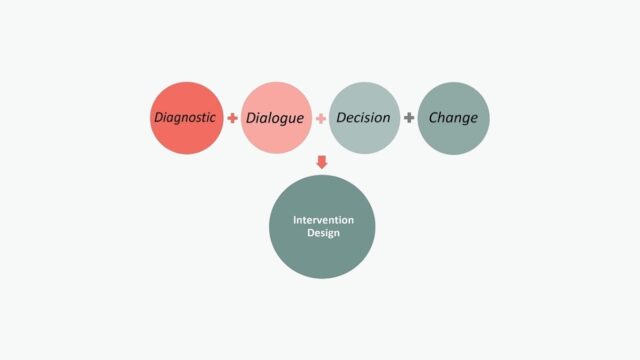
Planning and strategy development in the face of complexity series (part 7): Move from static to dynamic planning
This article is part 7 of a series of articles featuring the ODI Background Note A guide for planning and strategy development in the face of complexity.
Insights from adaptive management about how change happens tell us that many of the tasks associated with planning become ongoing and iterative, as understanding of what might make an effective intervention is necessarily incomplete.
Plans should be regarded as hypotheses about programme effects and future developments, not as blueprints. They should help those formulating and implementing policy to improve and develop their understanding of how the world works through ongoing cycles of evaluation, assessment and adjustment of change models and activities.
An idea of how change will happen (a ‘theory of change’) and a vision of the intended final outcome are both crucial for initial planning. But, given the inherent uncertainties, these plans should not only provide answers to problems, but also express assumptions and pose key questions. They should be made explicit and their relevance assessed so that they can be explored later on through monitoring or research.
For effective programming in complex situations, setting learning objectives may be as important as performance objectives, and interventions should be designed to actively test hypotheses. Plans need to be clear on how elements of the intervention will test and confirm, disconfirm, or refine key hypotheses; for example Snowden advocates plans to include ‘safe-fail experiments’ 1: small interventions designed to test ideas for dealing with a problem where it is acceptable for these interventions to fail.
The usefulness of these hypotheses needs to be reviewed regularly in the light of experience and/or changes in context. This requires an ‘iterative’ planning model, which foresees the revision and adaptation of plans through successive implementation cycles or learning loops. Many PME methods used in international aid already incorporate the principle of iterative planning and use of monitoring and evaluation (M&E), but there are serious shortcomings in practice. Several pre-conditions must be met for iterative planning to become effective.
- Appropriate timing: reviews should feed into the next planning cycle. M&E activities should be aligned with delivery milestones and decision-making periods – and be flexible enough for revisions beyond this time-frame if need be.
- Streamlined requirements: rules and (decision-making) procedures should facilitate the adaptation of plans in the light of review findings. The type and volume of information has to be limited, and should be adapted to the handling capacity of involved actors.
- Simple formats: plans should be light and imaginative, as they are primarily communication tools between involved actors. The formats should allow rapid up-dating, visualise complex situations and suit a broad, heterogeneous range of actors.
Next part (part 8): Move from prescriptive to flexible planning modes.
See also these related series:
- Exploring the science of complexity
- Managing in the face of complexity
- Taking responsibility for complexity.
Article source: Hummelbrunner, R. and Jones, H. (2013). A guide for planning and strategy development in the face of complexity. London: ODI. (https://www.odi.org/publications/583-exploring-science-complexity-ideas-and-implications-development-and-humanitarian-efforts). Republished under CC BY-NC-ND 4.0 in accordance with the Terms and conditions of the ODI website.
Header image source: rawpixel on Pixabay, Public Domain.
Reference:
- Snowden, D. (2010) ‘Safe-fail Probes’. Available at: https://cognitive-edge.com/blog/safe-fail-probes/ ↩





